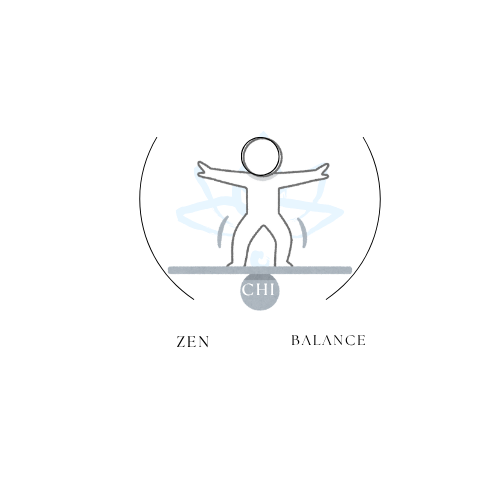
Smart Wellness Tweaks That Elevate Energy and Mood
Deel
Updated on: 2025-10-26
- Understanding wellness and why it matters for well-being
- Key benefits of wellness habits for everyday wellbeing
- Step-by-step guide: a simple wellness routine you can stick to
- Workplace wellness: ideas for busy professionals and remote teams
- Wellness FAQ: thoughtful answers to common questions
- Summary: wellness made gentle and sustainable
- About the author
Wellness can feel complex, yet it often begins with small, kind choices. In the first minutes of your day, a steady breath, a short stretch, or a glass of water can set a calm tone. This article explores wellness in a simple, respectful way, with self-care and mindfulness practices that support long-term well-being. If you wish to build the best daily wellness routine for busy professionals, you will find steps that are easy to start and gentle to maintain.
Understanding wellness and why it matters for well-being
Wellness is a steady, caring approach to how you live, work, and rest. It blends everyday choices that support your body, mind, emotions, and sense of connection. Rather than aiming for perfection, wellness invites balance and compassion. It is flexible, personal, and shaped by your values and needs. When you think about What is wellness and why is it important?, you might consider how simple habits help you feel grounded, how routines reduce decision fatigue, and how awareness guides kinder choices. Over time, these small actions can foster wellbeing and make your days feel more manageable.
There is no single way to practice wellness. Some people prefer quiet reflective breaks; others enjoy movement, nature, or creative moments. What matters is consistency in a way that feels humane and realistic. This guide offers options so you can build a routine that respects your time and energy.
Key benefits of wellness habits for everyday wellbeing
- Clarity and focus: Short mindful pauses can help you notice what matters and move through tasks with more ease.
- Stable energy: Gentle daily rhythms may support steadier energy across your day.
- Emotional steadiness: Brief check-ins can create space for calm responses instead of quick reactions.
- Work-life boundaries: Thoughtful rituals help mark the start and end of your workday.
- Self-kindness: A compassionate routine encourages progress over perfection and honors your limits.
If you would like to explore supportive tools and practices, you can browse helpful resources on the Collections page.
Step-by-step guide: a simple wellness routine you can stick to
Creating a sustainable wellness routine does not require dramatic changes. A gentle, five-step approach can fit even the busiest schedule. Each step is designed to be brief, adaptable, and kind to your current capacity.
Set a gentle intention
Begin with one sentence that describes how you would like to move through the day. For example, “I will move steadily and take small pauses.” This intention is not a promise; it is a reminder. Keeping it simple makes it easier to return to when your day becomes busy. You might place it on a sticky note, in a phone note, or as a quiet mental prompt.
Choose three anchor habits
Anchor habits are small actions that tie your wellness practice to something you already do. Consider selecting one for morning, one for midday, and one for evening. For example:
- Morning: Drink water before your first beverage.
- Midday: Take a two-minute stretch before lunch.
- Evening: Write one sentence about a moment you appreciated.
These anchors connect to existing routines, which can make them easier to remember and repeat.
Create five-minute versions
To reduce friction, design a tiny version of each habit that you can complete in five minutes or less. This supports wellbeing by keeping the bar kind. When time allows, you can expand. When it does not, you still keep your promise to yourself in a small, respectful way.
- Breathing: Three slow breaths with a gentle count in and out.
- Movement: A short walk, a stretch, or moving your shoulders and neck.
- Reflection: One line in a journal or a note in your phone.
If you would like a simple place to begin, you can return to the Home page for calm, practical ideas.
Add tiny prompts and reminders
Kind prompts help you remember your anchors. You might set a soft notification, place a water glass on your desk, or save a short checklist in your notes. Keep prompts supportive and unobtrusive. The goal is to reduce the mental load, not to add pressure. Consider pairing prompts with actions you already take, such as opening your laptop or finishing a call.
Do a weekly review and reset
Once a week, take a few minutes to reflect. Which habits felt helpful? Where did you feel resistance? Adjust one small thing for the week ahead. Wellness grows through gentle iteration. A brief review sustains your practice without judgment, and helps you respond to changing schedules and seasons of life.
Workplace wellness: ideas for busy professionals and remote teams
Workdays can be full and fast. A compassionate workplace wellness approach recognizes constraints and aims for small, steady improvements. Here are ways to weave self-care and mindfulness into professional settings.
Best daily wellness routine for busy professionals
- Begin with one mindful minute: Sit, breathe, and set a gentle intention for your working hours.
- Use meeting transitions: Stand, roll your shoulders, or look away from screens for a moment.
- Hydration check-ins: Keep water within reach and sip before long tasks.
- Boundaries for deep work: Consider short focus blocks with brief pauses between them.
- Closing ritual: Note one thing completed and one step for tomorrow. Then sign off with care.
For more practical ideas that you can adapt to your day, you may enjoy browsing the latest articles on the Blog.
Corporate wellness program ideas for remote teams
- Optional check-in prompts: Begin team calls with a brief non-personal prompt, such as “What is one supportive habit you used today?”
- Focus-block culture: Encourage shared quiet hours where messages are minimized.
- Micro-break menu: Create a list of two-minute movement or breathing options for team members to use as needed.
- Voluntary challenges: Offer gentle, inclusive themes, like “add one glass of water each morning” or “a five-minute walk after lunch.”
- Resource hub: Host a simple page with short routines, templates, and reminders that anyone can access without pressure.
Remote teams often thrive when flexibility and kindness guide wellness initiatives. Consider inviting suggestions and updating practices together so everyone feels included.
Wellness FAQ: thoughtful answers to common questions
What is wellness and why is it important?
Wellness is the ongoing practice of caring for your body, mind, and daily rhythms through small, intentional choices. It is important because steady routines can make days feel more manageable, support a sense of balance, and help you respond to life with a little more ease.
How can I create a simple wellness routine I can stick to?
Start with three anchor habits tied to moments that already happen: morning, midday, and evening. Keep five-minute versions ready for busy days. Use gentle prompts, and review your routine once a week. This approach keeps your wellness practice flexible and sustainable.
How do I practice mindfulness when I have little time?
Micromoments can be enough. Try three slow breaths before opening your inbox, a short stretch while a page loads, or a brief body scan at your desk. Over time, these tiny moments of awareness can support calm focus.
To learn more about our approach to wellness and how we craft gentle, practical resources, you are welcome to visit the About page.
Summary: wellness made gentle and sustainable
Wellness does not have to be complex or time-consuming. A kind intention, three anchor habits, and five-minute versions create a foundation you can maintain. Mindfulness and self-care become part of your day rather than extra tasks on your list. Whether you are building the best daily wellness routine for busy professionals or exploring corporate wellness program ideas for remote teams, small steps can lead to steady wellbeing. When you need reassurance or fresh ideas, you can revisit these steps, adjust one detail, and continue with patience.
About the author
Kai Zen Chi Balance shares calm, practical guidance for everyday wellness. The focus is on respectful, accessible routines that meet people where they are. If you would like to read more gentle, actionable insights, please explore the Blog or return to the Home page whenever you need a peaceful reset.

I'm a passionate curator at Zen Chi Balance, dedicated to spreading calm, harmony, and mindful living through faith-inspired lifestyle products. I help craft meaningful experiences for our global community of mindful shoppers.
The content provided is for informational and inspirational purposes only. It is intended to encourage personal growth, mindfulness, and balance in daily life. Zen Chi Balance does not provide medical, legal, or professional advice. For specific concerns or guidance, please consult a qualified professional. Visit us at www.zenchibalance.com for more inspiration and resources.
